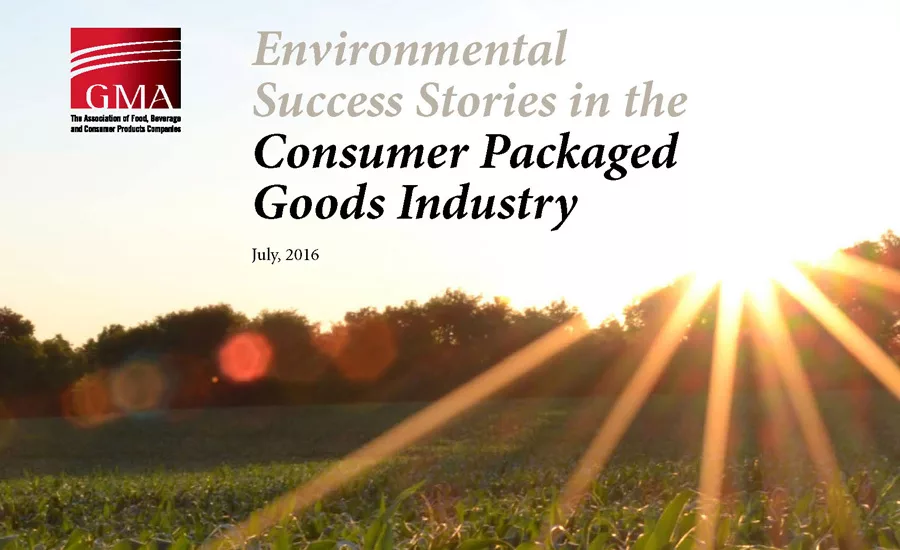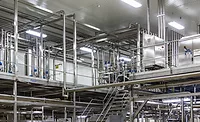TECH FLASH
Sustainability success stories in the food and beverage industry
GMA’s new report, Environmental Success Stories in the Consumer Packaged Goods Industry, shows the range of innovation across the CPG industry.

The Grocery Manufacturers Association (GMA) released a new report highlighting examples of significant strides by companies in managing and reducing waste, more efficiently using water and reducing air emissions.
“Companies are working every day to find innovative ways to reduce their environmental footprint and preserve natural resources while providing consumers with high-quality products,” says Pamela Bailey, president and CEO of GMA. “The examples in this report can be a model for others on how companies can deliver on their commitment to sustainability by innovating to reduce their environmental footprint and preserve national resources, changing operations to reduce food waste, save energy or cut water usage.”
The report, “Environmental Success Stories in the Consumer Packaged Goods Industry,” shows the range of innovation across the CPG industry that both improves operations and benefits consumers and society as a whole. This report aims to draw together and highlight examples of innovative environmental sustainability strategies undertaken by GMA members.
Each air, waste and water example in the report shows innovative technology, processes or approaches; yields a quantifiable return on investment; documents a reduction in impact or improvement in efficiency; or demonstrates industry collaboration.
Examples include:
-Mars Inc. partnered with Sumitomo Corporation to create a wind farm the size of Paris near Lamesa, TX. The 118-turbine wind farm is helping the company reach its goal of becoming carbon neutral by 2040. The wind farm represents the biggest long-term commitment to renewable energy use by any food manufacturing business in the US. Mesquite Creek, which came online halfway through 2015, is slated to generate over 800,000 megawatt hours per year, which is the equivalent of 100 percent of the electricity needs of the 70 sites comprising Mars’ US operations
-After noticing fleet emissions contributing to a quarter of its total global greenhouse gas emissions, PepsiCo, Inc. set out to improve efficiency through a variety of programs. These include different fuels, hybrids, electric vehicles, driver training, GPS, lightweighting, better maintenance and aerodynamics. For example, by the end of 2014, PepsiCo’s Frito-Lay North America division had one of the largest company-owned electric vehicle programs in the US, with more than 267 electric trucks on the road. Frito-Lay also used a fleet of 331 compressed natural gas tractors to achieve productivity savings of over $3 million that same year.
-The Coca-Cola Company developed a type of plastic made from renewable material from plants, replacing fossil-based ingredients used to make plastic bottles. More than 30 billion of these plant bottles have entered markets in nearly 40 countries since 2009, saving more than 630,000 barrels of oil.
-Nestlé’s investment in a “zero water” milk factory in Modesto, CA will not use any local freshwater resources, and instead will extract the water it needs to manufacture dairy products from milk. This investment alone will save some 63 million gallons of water each year.
-A Land O’Lakes facility which packages animal feed identified an innovative way to recycle 95 percent of the bag trim used in packaging. This facility teamed up with recycling and waste management partners to create a one-of-a-kind sorting system that uses air to sort the materials. This reduced the amount of trash generated at the facility and ensured that materials with recyclable value are kept out of landfills.
The report is the third edition of GMA’s biennial Environmental Success Stories. A copy of the report can be downloaded here.
Looking for a reprint of this article?
From high-res PDFs to custom plaques, order your copy today!







